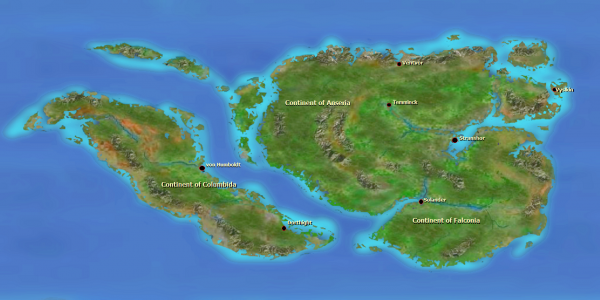BY LETTER
Cartography
Galactography
Galactography > Maps of the Terragen Sphere
Culture and Society > Economics > Occupations, Avocations, and Work
Galactography > Places and Locales
Galactography > Maps of the Terragen Sphere
Culture and Society > Economics > Occupations, Avocations, and Work
Galactography > Places and Locales
The making and reading of maps. |
 Image from Steve Bowers |
Related Articles
- Cartographer
- Geography
- Geologist - Text by M. Alan Kazlev, from the original by Robert J. Hall
One who studies or practises geology. While most geologists in the long inhabited and colonised regions of space are hobbyists and amateurs, most scientific, colonization, and interstellar surveying expeditions and deep space probe missions include at least one geologist (biont, vec, ai, or turingrade expert system) and usually several when mapping and exploring new solar systems, terraforming likely planets. Geologists are also consulted by prospectors, surveyors or developers when searching for valuable minerals, water, natural gas, or other useful planetary resources, selecting a good site for a habitation dome or mining operation on an unexplored or little known planet, and so on. - Geophysics - Text by M. Alan Kazlev
The study of the structure and dynamic behaviour of terrestrial moons and planets. Includes elements of geology, applied physics, and planetology; study of the geosphere mapping the internal planetary structure; the properties of rock within a planet; planetary formation, development, tectonics and seismology; the nature, history and evolution of the planetary magnetic field if any; and options for terraforming and/or megascale engineering. - Geosphere - Text by M. Alan Kazlev
In a Terrestrial Class planet, the rocky mass of the world, everything apart from atmosphere and ocean. In the case of Gaian Type terrestrial planets includes continental and oceanic crust as well as the various layers of the planet's interior. The interior of the Terrestrial Class in general and the Gaian Types in particular is layered both chemically and mechanically. While some terrestrial class worlds have a static geosphere, in almost all Gaian Types worlds and some other terrestrial types the geosphere is active, with the crust is in a constant state of motion that gives rise to movement of the continents. The study of the geosphere is known as geology.
Appears in Topics
Development Notes
Text by M. Alan Kazlev, modified from the original write-up by Robert J. Hall
Initially published on 24 September 2001.
Initially published on 24 September 2001.






